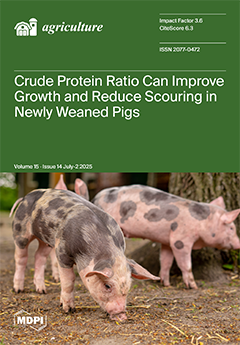Accurate plant species identification in desert grasslands using hyperspectral data is a critical prerequisite for large-scale, high-precision grassland monitoring and management. However, due to prolonged overgrazing and the inherent ecological vulnerability of the environment, sericite–
Artemisia desert grassland has experienced significant ecological degradation.
[...] Read more.
Accurate plant species identification in desert grasslands using hyperspectral data is a critical prerequisite for large-scale, high-precision grassland monitoring and management. However, due to prolonged overgrazing and the inherent ecological vulnerability of the environment, sericite–
Artemisia desert grassland has experienced significant ecological degradation. Therefore, in this study, we obtained spectral images of the grassland in April 2022 using a Soc710 VP imaging spectrometer (Surface Optics Corporation, San Diego, CA, USA), which were classified into three levels (low, medium, and high) based on the level of participation of
Seriphidium transiliense (Poljakov) Poljakov and
Ceratocarpus arenarius L. in the community. The optimal index factor (OIF) was employed to synthesize feature band images, which were subsequently used as input for the DeepLabv3p, PSPNet, and UNet deep learning models in order to assess the influence of species participation on classification accuracy. The results indicated that species participation significantly impacted spectral information extraction and model classification performance. Higher participation enhanced the scattering of reflectivity in the canopy structure of
S. transiliense, while the light saturation effect of
C. arenarius was induced by its short stature. Band combinations—such as Blue, Red Edge, and NIR (BREN) and Red, Red Edge, and NIR (RREN)—exhibited strong capabilities in capturing structural vegetation information. The identification model performances were optimal, with a high level of
S. transiliense participation and with DeepLabv3p, PSPNet, and UNet achieving an overall accuracy (OA) of 97.86%, 96.51%, and 98.20%. Among the tested models, UNet exhibited the highest classification accuracy and robustness with small sample datasets, effectively differentiating between
S. transiliense,
C. arenarius, and bare ground. However, when
C. arenarius was the primary target species, the model’s performance declined as its participation levels increased, exhibiting significant omission errors for
S. transiliense, whose producer’s accuracy (PA) decreased by 45.91%. The findings of this study provide effective technical means and theoretical support for the identification of plant species and ecological monitoring in sericite–
Artemisia desert grasslands.
Full article





